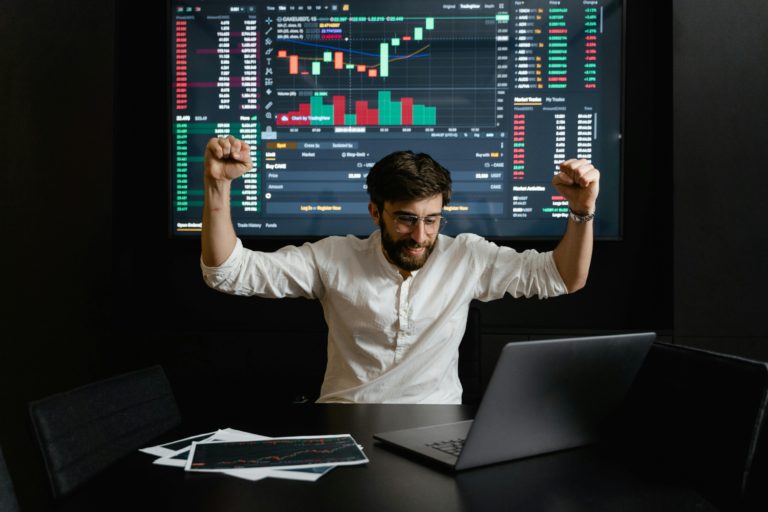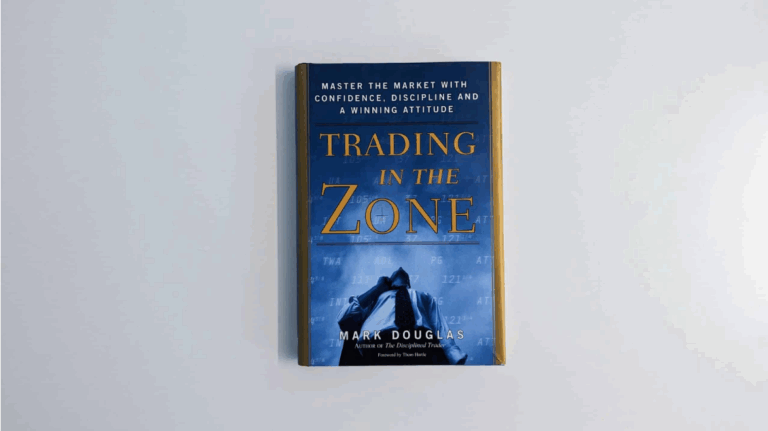
Overview: Most active investors know what to do, but still don’t do it. Why? Fear, subconscious beliefs, and poor decision habits sabotage their execution. But to achieve consistent success, traders must re-train their mind to think in probabilities, handle trading drawdowns, and follow your edge without hesitation.
This article shows you to do exactly that: based on SPA3 mechanical systems and the core mindset principles from Mark Douglas’s Trading in the Zone.
Why Do Smart Investors Still Make Dumb Decisions?
it’s easy to say: “Just follow your system.” But in practice? Your fears and old beliefs take over.
The reality is, most traders bring the wrong mindset into the market: one shaped by a world where effort equals reward and where being wrong means being judged. The market doesn’t care about that. And it doesn’t reward effort, only consistent execution of an edge.
To operate like a pro, you need to think like one. This begins by reprogramming how you perceive risk, loss, and uncertainty.
Key Takeaway: Success in the market starts with the right thinking, not more knowledge.
What Are Market Beliefs and Why Do They Sabotage Trades?
Your beliefs are autopilots that shape how you see the world. They’re hardwired through experience, repetition, and reaction.
In the markets, these beliefs manifest as:
- Fear of being wrong
- Chasing winners
- Freezing on entries or exits
- Overreacting to short-term moves
The problem? You don’t trade the market directly. You trade your beliefs about the market. If those beliefs don’t match market reality, they’ll keep tripping you up no matter how solid your strategy is.
Key Takeaway: You don’t trade the markets; you trade your conscious and even subconscious beliefs about the markets.
How Do You Replace These Limiting Beliefs with Trading Truths?
The good news? These beliefs can be changed.. if you’re willing to do the work.
The three steps are:
- Acknowledge the beliefs that no longer serve you
- Commit to replacing them
- Energize new beliefs through repetition and action
This process isn’t quick or easy. Like a martial arts belt progression, it requires practice and discipline.
You need to let go of old beliefs, like fear of missing out, fear of being wrong, or fear of loss. At the same time, you need to acquire new beliefs that are rooted in probabilistic thinking, emotional balance, and long-term process.
Key Takeaway: Changing your trading results requires changing your beliefs, which only happens through repetition and continuous reinforcement.
Why Do Losses Hurt So Much (and How to Respond Better)?
We’re biologically wired to avoid pain. That includes losses, regret, or embarrassment.
So when a trade loses, you might respond with:
- Denial (“That wasn’t a real signal.”)
- Blame (“The market’s rigged.”)
- Avoidance (“I’ll skip the next setup just in case.”)
But here’s the truth: losses are part of the game. The difference lies in how you respond:
- Expect them in advance. Even the best systems have losing trades.
- Keep perspective. Judge your results by your equity curve over hundreds of trades, not one outcome.
- Stay mechanical. Follow your process exactly, regardless of recent wins or losses.
- Detach identity. A losing trade doesn’t mean you are wrong; it means the odds are playing out.
Until you change your response to losses, you’ll keep making irrational decisions because of them.
Key Takeaway: Redefining your relationship with losses is crucial to breaking the cycle of inconsistent trading.
What Trading Errors Reveal About Your Mindset
Here are some classic errors that point to misaligned beliefs:
- Hesitating on entries
- Exiting too early (or too late)
- Risking too much (or too little)
- Overtrading after a win
- Avoiding setups after a loss
These aren’t strategy issues; they’re mindset issues. They happen when the brain overrides your rational plan.
In many cases, traders who commit these errors don’t take responsibility. Instead, they blame software, market volatility, or timing. But unless they own their mistakes, they’ll never improve.
Key Takeaway: Every execution error is a mirror, showing where your mindset still needs work.
Why Thinking in Probabilities Is the Breakthrough You Need

The market is not your opponent. It’s a neutral arena that reflects your decisions.
The key is to shift from outcome-thinking to probability-thinking:
Start thinking like: “I don’t need to win every trade. I just need to follow my process over a series of trades.”
That one belief alone can dissolve the pressure. And it opens the door to consistent execution.
Mark Douglas’s “Five Fundamental Truths” and “Seven Principles of Consistency” (from Trading in the Zone) are perfect foundations for developing the right mindset. Repeating them aloud and using auto-suggestion before and during every trading day is how you start embodying them.
Key Takeaway: Thinking in probabilities overrides haphazard feelings from your trading decisions and makes consistency easy and automatic.
How to Build a New Trading Identity with Auto-Suggestion
Auto-suggestion, popularized by Napoleon Hill in Think and Grow Rich, is the process of reprogramming your subconscious through spoken affirmations and deliberate action.
Say your beliefs aloud, daily. Then back them up with rules-based execution.
Each time you follow your system, you strengthen your new beliefs.
Each time you act from fear or hope, you go back to your old patterns.
You’re not trying to be perfect. You’re trying to be consistent, especially in how you engage your system.
This mindset helps you handle trading drawdowns with rules instead of panic.
Key Takeaway: Auto-suggestion is a powerful tool to embed new beliefs and remove emotional bias from your trades.
Why “Winning” Is the Wrong Goal and What to Focus on Instead
Most traders obsess over being right. But chasing wins is the wrong goal, because:
- It creates pressure and hesitation (“I can be wrong”)
- It leads to emotional mistakes like revenge trading
- It ignores the reality that even highly profitable strategies have losing trades
When you shift focus from being “right” to following your process:
- You stop fearing losses, because they’re expected and managed
- You judge success by your equity curve, not each trade
- You give your edge the room to work over time
Here’s the truth:
- Win rates below 60% can still be highly profitable
- Individual trades don’t matter; your equity curve does
- Losses are part of the game (not failures)
…you finally release yourself from needing to control the market. That’s when you gain trust, objectivity, and the ability to re-enter the market after a crash with a clear mind.
Key Takeaway: Your goal is not to “win” trades. Winning feels good in the moment, but it’s not sustainable. The real goal is consistent execution of your process, because that’s what actually drives long-term profitability.
What Should You Do Next to Re-train Your Mind?
Start by energizing the right beliefs:
- Markets are uncertain, not unfair
- I trade my edge, not my emotions
- Consistency > perfection
- A 40-55% win rate is enough
- Losses = tuition for success
Then, act consistently with these beliefs, even when it’s uncomfortable. Especially when it’s uncomfortable.
SPA3 provides the mechanical framework to support this mindset shift. This is your bridge to becoming a trader with a bigger mindset for long-term growth.
Key Takeaway: System + Mindset = Edge. You need both to succeed long-term in active investing.
Final Thoughts
Re-training your mind for trading success isn’t about finding the perfect system. It’s about changing how you think, act, and respond under pressure. By building new beliefs, thinking in probabilities, and applying consistent execution, you’ll shift from making emotional trading decisions to empowered ones.
This is the real edge: mindset plus process. And it’s available to any trader willing to do the work.
Start with one belief. Reinforce it daily. Then let your actions follow.
Consistency will take care of the rest.
If you’re tired of inconsistent results, emotional trades, and second-guessing, start building a process-focused mindset today! Book a call with Share Wealth Systems and let us walk you through how SPA3 supports mindset-driven trading success.
Frequently Asked Questions
1. What is the biggest psychological barrier for traders?
Many equate a losing trade with being a failure themselves, making every loss a hit to both finances and self-esteem. This leads to avoiding necessary exits, clinging to bad positions, or revenge trading. In reality, losses are neutral and unavoidable. Once traders separate their identity from trade outcomes, they can trade with objectivity and discipline, free from the fear of being “wrong.”
2. Can I overcome emotional bias completely?
No, but you can train yourself to act in alignment with your process, regardless of how you feel.
3. How long does it take to change trading beliefs?
Like a martial arts belt, it depends on your dedication, but repetition, action, and reflection can speed it up.
4. Do I need to read Trading in the Zone to do this?
Highly recommended. It lays the foundation for trading mindset mastery and complements our SPA3 mechanical systems.
5. What’s the fastest way to stop making trading errors?
Stop analyzing individual trades. Focus on following your system across a series of trades.
